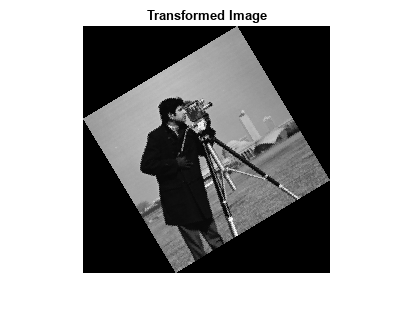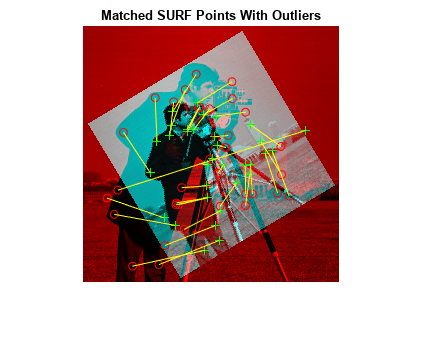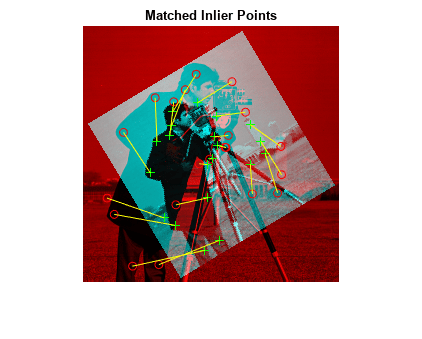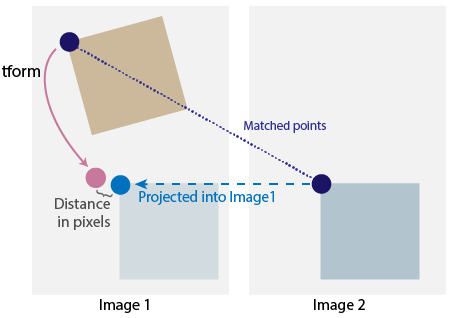estgeotform2d
Syntax
Description
tform = estgeotform2d(matchedPoints1,matchedPoints2,transformType)matchedPoints1 to the inliers in the
matched points from another image matchedPoints2.
[
additionally returns a vector specifying each matched point pair as either an inlier or an
outlier using the input arguments from the previous syntax.tform,inlierIndex]
= estgeotform2d(___)
[
additionally returns a status code indicating whether or not the function could estimate a
transformation and, if not, why it failed. If you do not specify the
tform,inlierIndex,status] = estgeotform2d(___)status output, the function instead returns an error for conditions
that cannot produce results.
[___] = estgeotform2d(___,
specifies additional options using one or more name-value arguments in addition to any
combination of arguments from previous syntaxes. For example,
Name=Value)Confidence=99 sets the confidence value for finding the maximum
number of inliers to 99.
Examples
Input Arguments
Name-Value Arguments
Output Arguments
Algorithms
The function excludes outliers using the M-estimator sample consensus (MSAC) algorithm. The MSAC algorithm is a variant of the random sample consensus (RANSAC) algorithm. Results may not be identical between runs due to the randomized nature of the MSAC algorithm.
References
[1]
[2]
Extended Capabilities
Version History
Introduced in R2022bSee Also
Functions
estgeotform3d|estimateFundamentalMatrix|detectSURFFeatures|detectMinEigenFeatures|detectORBFeatures|detectFASTFeatures|detectMSERFeatures|extractFeatures|matchFeatures|fitgeotform2d





